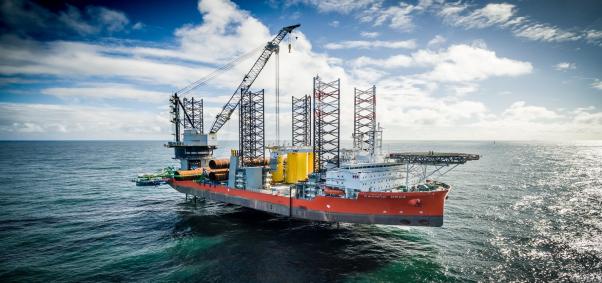
This article was published in Financial Express on January 8, 2016.
There is life after Paris
By Rajat Kathuria and Aarsi Sagar
Rajat Kathuria is the Director and Chief Executive of ICRIER. Aarsi Sagar is a consultant with ICRIER. Both Kathuria and Sagar were contributors to NCE's Better Cities, Better Growth: India's Urban Opportunity.
India’s growth story, and the structural transformation it will bring about for our energy and urban systems, will likely be the most significant global shift of the early 21st century. Our growth story could continue down its current path—worsening air quality in many cities, two consecutive years of drought, and the compounding of natural catastrophes through poor city planning and massive overbuilding, as we saw with disastrous consequences in Chennai. And perhaps, as the thinking goes, eventually we will be at an advanced enough stage of economic growth to correct our course and improve the negative externalities that we currently live with. But we should recognise that doing so poses higher risks and potentially higher costs. Instead, we have the opportunity, especially in the post-Paris era, to choose an alternative growth path.
It is critical that we think not just about growth, but about cleaner growth. We cannot afford to do otherwise. Both the costs associated with the current, business-as-usual, high-carbon growth model, and the economic opportunities arising from investing in sustainable, low-carbon infrastructure, make a compelling case.
The two key systems where we are likely to see the most change—and therefore where we have the greatest opportunity to get things right—are in our urban and energy infrastructure. Our graduation from a low-income to a middle-income country status means that we will see a dramatic increase in per-capita energy consumption. Increasing the quantity and quality of energy will be critical in driving economic growth in the country. Additionally, about 70-80% of all modern infrastructure, including much of India’s freight and transport networks that will exist in 2050, is yet to be built. The country is committed to increasing the share of manufacturing GDP to 25% from the current 17% by 2020 alongside significant initiatives such as ‘Make in India’ and ‘100 Smart Cities’. Over the next two decades, 75% of India’s GDP and 70% of all net new jobs will be generated from cities.
On the urban front, we must start by acknowledging that India’s environmental externalities are already estimated to cost 5.7% of GDP and urban pollution is the cause of a disturbing number of premature deaths—630,000 in 2010 alone because of outdoor particulate matter. We are already home to 13 of the world’s 20-most polluted cities, including the top four—Delhi, Patna, Gwalior and Raipur. Delhi’s government has awoken to this challenge and pledged to tackle the situation head-on through innovative methods to limit vehicular pollution. But even the most generous estimate of their plans must acknowledge that more needs to be done in order to seriously address the problem.
In fact, compact, connected and coordinated cities can generate stronger growth, create jobs, alleviate poverty and significantly reduce the cost of providing services and infrastructure. A recent report found that investing in building efficiency, public and low-emission transport, and better waste management in cities worldwide would have a net present value of $17 trillion by 2050 based on energy savings alone. With national policy interventions such as support for low-carbon innovation and reduced fossil fuel subsidies, the direct savings could be as high as $22 trillion. These actions could also reduce greenhouse gas emissions by 3.7 GtCO2e (gigatonnes of equivalent carbon dioxide) per year by 2030, more than India’s entire current annual emissions.
In terms of energy, there are numerous opportunities for improving efficiency. For instance, decreasing transmission and distribution losses, currently estimated at a staggering 20% of electricity output, would go a long way to improving access. At the global scale, energy efficiency investments could, according to the International Energy Agency (IEA), boost global GDP by $18 trillion by 2035, increasing growth by as much as 1.1% per year and creating jobs. In India, schemes such as the Perform, Achieve and Trade (PAT) for trading energy efficiency savings among the country’s largest energy consuming plants can be complemented by upgrading domestic energy efficiency standards for fuels and household goods to be on a par with international standards.
Building the energy infrastructure to power major initiatives such as ‘Make in India’ also provides a critical low-carbon opportunity. The ‘Make in India’ initiative is associated with paired policy changes, including easing the cost of doing business, reforming labour and land laws, and building high-quality infrastructure. The intent is to create jobs at home so that India’s demographic potential can be exploited to create a globally-competitive and transformative manufacturing sector.
While in the foreseeable future it is likely that coal will remain India’s cheapest fuel, there is ample room for renewable energy players to enter the game. Already in many parts of the world, solar and wind are cost-competitive with fossil fuels and are getting cheaper. India’s national climate targets have already made clear our ambitious intention to ensure that renewables are a major part of our energy mix in the future. China and India alone plan to install around 320GW of wind and solar power in the next 5-7 years—double of all the existing renewable capacity in the world today. If we are able to deliver on this promise, we will witness an energy transformation like no other. The rapid scale-up of low-carbon energy sources and energy efficiency will be essential to drive growth, connect the estimated 300 million Indians currently lacking access to electricity, and reduce fossil fuel-related air pollution.
While India is being aggressive on renewable targets, shifting from coal to clean coal and to renewables will simultaneously require intensive global cooperation. Technological advances, especially for storage, will be essential. Developed economies also need to make good on the post-Paris momentum and deliver support—both in the form of capital and technological support—while recognising historical responsibilities. India should, for its part, continue with policy reforms that address the many institutional failures to roll out low-carbon infrastructure for a rapidly growing economy. In December, countries came together in Paris in an unprecedented manner, signing on to a truly 21st century tryst with destiny, agreeing to take strong climate action. We should stand ready to redeem that pledge since, in doing so, we will reap the benefits of a sustainable, prosperous future.






